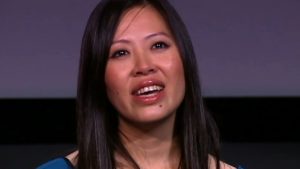Living in a Multicultural World

What does identity mean for an immigrant? Tan Le was only four years old when she and her family took a dangerous journey to emigrate from Vietnam to Australia. After time in a refugee camp they settled in a suburb of Melbourne Australia. In her 2014 TED Talk, she describes her feelings of living in a parallel existence with different identities; as an Asian student focused on her education, an immigrant from a community where many felt isolated and disenfranchised and a social activist who felt out of place without a firm understanding of dominant cultural and social norms when she was asked to present at large venues and forums. She continued to challenge herself, completed law school and now runs a bioinformatics company. Not all immigrants will have the same level of professional success as Tan Le, but most share the experience of struggling to form a personal identity and social identity.
Learning Objectives
At the end of the chapter, you should be able to:
- Explain the concept of multicultural identities across and within cultures.
- Explain how multicultural identity is different than personal identity or social identity.
- Define the term acculturation and how it is different from enculturation.
- Identify a type of positive acculturation and negative acculturation.
- Distinguish between acculturation and culture shock.
- Identify psychological differences associated with bilingualism.
- Distinguish between cultural frame switching and cultural code switching.
- Explain the foreign language effect and its relationship to negative perceptions of bilingual speakers.
- Distinguish between frame switching and code switching. Provide examples.
- Distinguish between cultural reaffirmation, identity denial and stereotype threat as challenges of living in a multicultural society.

